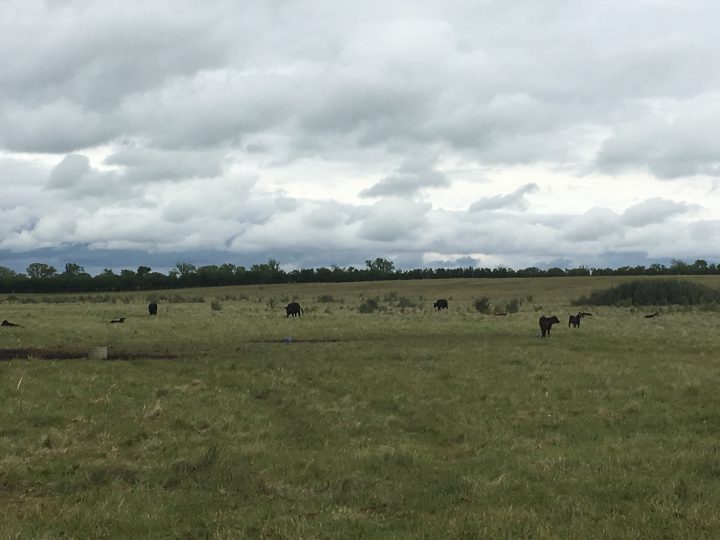Despite recent rains, there are a few locations weather systems have skirted around leaving parts of the Prairies scorched.

With 400 head of black angus cattle, determining where their next meal is coming from is challenging enough for Barry Friesen. Factor in a lack of rain, and the situation is dire for Friesen.
“It just basically eats away at the bottom line,” said Friesen, who estimates he will go into winter with 80 per cent less hay.
“Bale behind the combine sort of thing and then supplement with either range pellets or grain or whatever we can find. We find for a cow/calf operation purchasing hay is usually a little too costly,” he said.
Pasture land is also critical.
“If we do run low on grass later this fall, the calves won’t come out as heavy as they should. The cows won’t come into the winter in as good a condition as they should.”
Following a dry fall and a winter with below average precipitation, hay yields are down across the province according to the Saskatchewan Agriculture‘s weekly crop report. While yields may be low, 50 per cent of hay land is estimated to be good quality feed.

Get daily National news
In Friesen’s area, both quantity and quality are lacking. It’s a localized issue according to the crop report. Most areas of Saskatchewan have an adequate amount of topsoil moisture with a few exceptions, such as Friesen’s.
But the hay land isn’t a write off yet according to provincial crop extension specialist Shannon Friesen.
“If it does rain over the next couple of weeks whatever has been cut can actually regrow and hopefully livestock producers are able to take another cut off of those fields,” she said.
Additionally, dry conditions have led to watering problems. Friesen’s dugout is the lowest he’s seen it. It’s generally used to water half his herd which he grazes on rotation in the pasture surrounding the dugout.
“Ones like this that rely on spring runoff, it won’t be usable this year at all,” said Friesen.
Recent testing shows mineral content is at a level that could be fatal to livestock.
Travis Peardon, a livestock and feed extension specialist tested the water.
“What we see is very little runoff in the spring so those dugouts don’t get recharged with fresh water. We have hot dry weather without much rain so there’s no runoff going into those dugouts,” he said.
Friesen said his hay and pasture land has recieved between 30 and 40 mm of rain this growing season.
“Today it looked like maybe we’ll get something,” he said looking skyward. “We just keep doing what we do and hope for the best.”




Comments